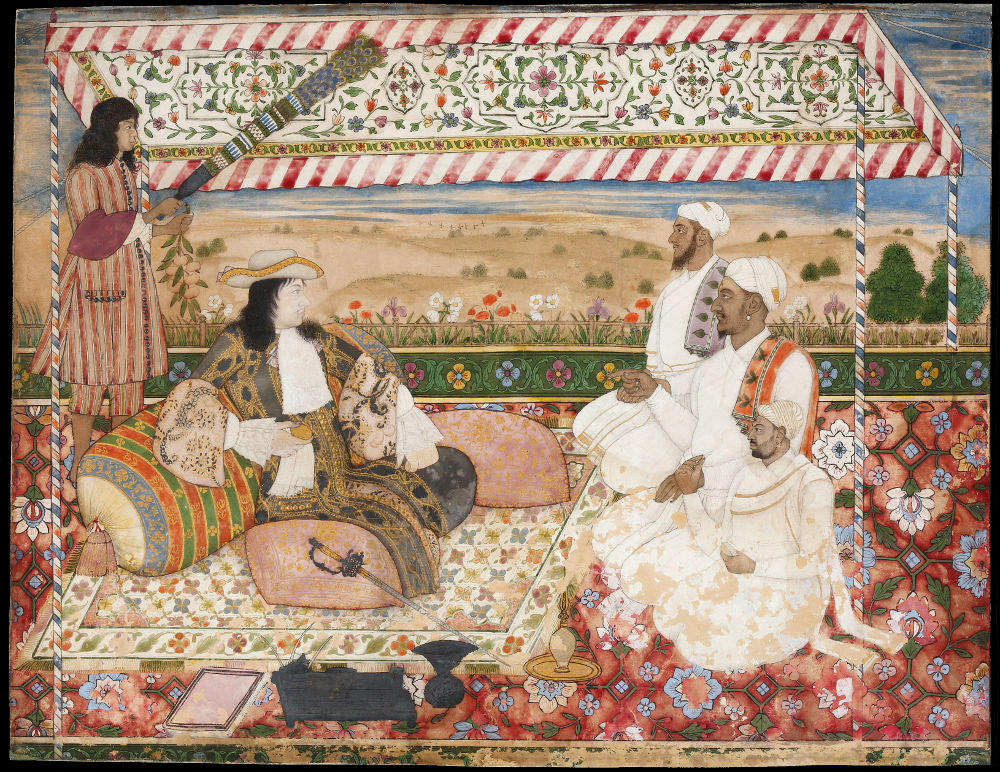|
The Darbar of Cornelis van den Bogaerde, c. 1687
VOC (Dutch East India Company - Vereenigde Oost-Indische Compagnie)

A larger image of The Darbar of Cornelis van den Bogaerde, India, c. 1687.
India, Deccan, Golconda; c. 1687
20.2 × 26.2 cm
The Dutch had had trading posts on India’s southeastern Coromandel Coast from the 16th century, but in the 17th were given competition from other European countries, including France, Britain, and Denmark.
The main figure in European dress has been identified as Cornelis van den Bogaerde.
Bogaerde was in charge of the Dutch trading post in Hyderabad in the Islamic state of Golconda, and it was a local painter who made the two miniatures.
On this miniature, Cornelis van den Bogaerde is depicted in a darbar similar to the princely audiences that are known from Mughal art, though they most often have a larger number of figures.
Bogaerde is more elegant in this miniature than in the procession scene.
He is dressed in the newest European fashion as it emerged from the court of Louis XIV at Versailles.
Nonetheless, the scene is rendered in the relaxed style that is characteristic of court art in Golconda.
Bogaerde reclines comfortably while his Indonesian servant, in suitable European garb, stands behind him with a gigantic fan of peacock feathers and a branch from a fruit tree – an allusion to the origins of his surname (Dutch for an orchard).
He is conversing with three merchants, two of whom with marks on their foreheads are Hindus.
The man in the middle seems to be leading the discussions and is also the largest (the most important).
The rendition is colourful, and the portraits of the characters are vividly yet precisely conceived.
Inv. no. 43/2008 & 42/2008
Source: The David Collection Museum, Copenhagen, Denmark.
See also The procession of Cornelis van den Bogaerde
Previous: Nata, Rajput from a late C17 Ragamala Next: The procession of Cornelis van den Bogaerde, c. 1687
|

